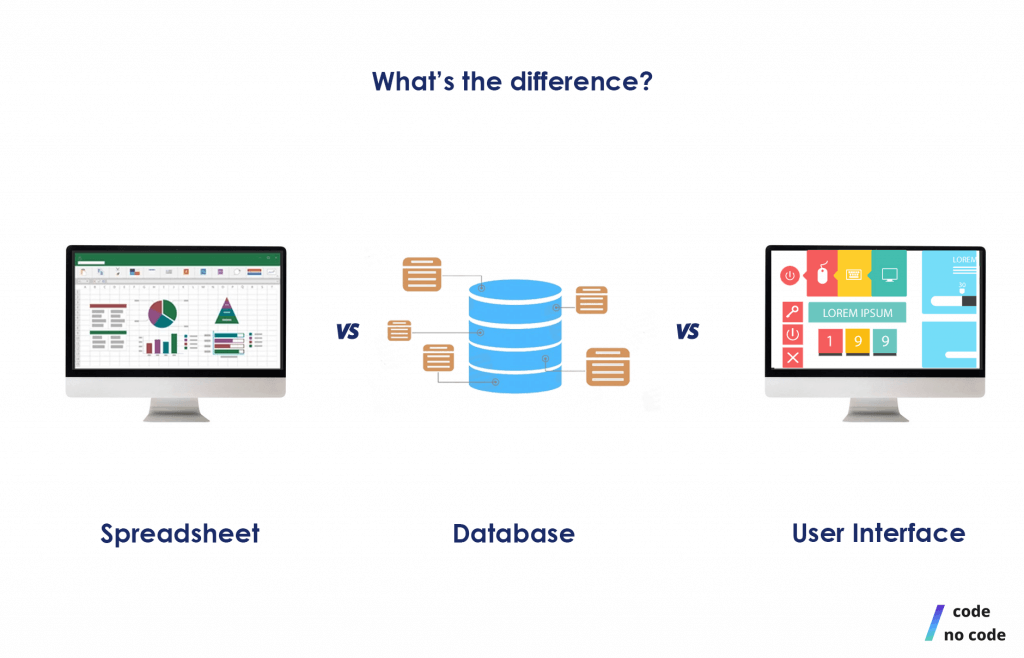No-Code Solutions for Open System Data Source Creation: Develop Without Coding Skills
No-Code Solutions for Open System Data Source Creation: Develop Without Coding Skills
Blog Article
Discover Just How Scalable Data Sources Can Be Utilized Without Coding to Enhance Your Business Workflow
In today's busy business environment, the capacity to handle and assess data effectively is extremely important. no-code. Scalable data sources, particularly when combined with no-code options, offer a transformative method that encourages non-technical individuals to improve procedures.
Understanding Scalable Databases
Scalable databases are necessary for modern-day business procedures, permitting organizations to effectively take care of raising volumes of data without giving up efficiency. These databases are made to grow and adjust to the altering needs of an organization, making sure that they can manage larger datasets and more intricate queries as business needs develop.
Understanding scalable databases entails identifying their two primary kinds: upright scaling and straight scaling. Vertical scaling, or "scaling up," includes including more power (CPU, RAM) to an existing server to enhance efficiency. Alternatively, straight scaling, or "scaling out," involves including a lot more web servers to distribute the lots, which usually leads to higher flexibility and fault tolerance.
An additional critical facet is the design of scalable data sources, which can be either relational or non-relational. Relational data sources, such as MySQL and PostgreSQL, are structured and use SQL for queries, while non-relational databases, like MongoDB and Cassandra, supply more versatility with disorganized information.
Inevitably, comprehending scalable databases is crucial for services aiming to utilize information as a calculated asset, allowing them to stay competitive in a significantly data-driven environment.
Advantages of No-Code Solutions
Opening the potential of no-code options equips services to enhance procedures and improve performance without the demand for comprehensive programs knowledge. These systems permit non-technical customers to produce, customize, and handle databases easily, therefore democratizing access to modern technology across teams.
Among the primary advantages of no-code remedies is their rate of execution. Services can rapidly release applications and automate procedures, considerably lowering the moment invested on advancement cycles. This dexterity allows companies to respond promptly to market modifications and customer demands, fostering an affordable side.
Additionally, no-code systems minimize dependence on IT divisions for daily jobs, enabling technological teams to concentrate on more intricate projects that call for specialized skills. This change not only optimizes resource allotment yet likewise advertises advancement within the organization.
Cost-effectiveness is one more advantage, as no-code solutions can reduce advancement and upkeep costs. By decreasing the demand for coding know-how, firms can harness the capacities of their existing labor force without the overhead of working with extra employees.
Popular No-Code Database Tools
The surge of no-code options has actually led to the development of numerous database tools that cater to businesses seeking efficiency and access. These tools equip customers with minimal technological proficiency to develop, take care of, and manipulate great post to read data sources perfectly.

Caspio attracts attention for its ability to build web applications with no coding. It enables organizations to produce robust data sources and release applications swiftly, accommodating different market demands. Flair supplies powerful data and straightforward user interfaces management capacities, making it possible for organizations to develop custom applications tailored to their operations.

Use Situations in Company Workflow
How can companies leverage database tools to enhance their procedures? Scalable their website databases supply organizations with effective capacities to manage and assess data without the demand for extensive coding expertise. These tools can enhance numerous company processes, inevitably resulting in enhanced effectiveness and productivity.
One popular usage instance is consumer partnership management (CRM) Companies can utilize scalable databases to track customer interactions, preferences, and feedback, allowing tailored interaction and better service. By centralizing this details, groups can collaborate more successfully and reply to client requirements in real-time.
Another significant application is inventory administration. Firms can use no-code data source tools to monitor supply levels, track deliveries, and forecast demand. This guarantees optimum stock degrees, decreases waste, and reduces stockouts.
In addition, project administration can gain from scalable databases by enabling groups to manage tasks, target dates, and sources in a linked platform. With real-time updates and information visualization, job managers can make informed decisions.
Starting With Execution
Executing scalable databases in service operations calls for an organized technique to ensure successful integration and use. The very first step is to carry out a thorough requirements analysis, recognizing specific service needs, information types, and anticipated growth patterns. This foundational understanding will certainly guide the choice of the appropriate data source service.
Following, choose an user-friendly, no-code data source system that lines up with your operational objectives. no-code. Numerous modern-day options provide instinctive user interfaces, allowing non-technical individuals to manage data efficiently. After choosing a platform, develop a clear data design that details exactly how information will be organized, accessed, and preserved
Training is critical; make certain that employee are outfitted with the needed skills to use the data source. Take into consideration providing tutorials or workshops to acquaint team with the system's capabilities.
Conclusion
In conclusion, the integration of scalable databases via no-code remedies offers substantial advantages for organization procedures. Eventually, leveraging these innovations can lead to boosted performance and operational performance, positioning organizations for continual development in a our website competitive landscape.
One prominent no-code database tool is Airtable, which integrates the performance of a spread sheet with the power of a database.How can companies take advantage of database devices to improve their operations? Organizations can use scalable data sources to track customer communications, choices, and feedback, making it possible for individualized communication and better service.Executing scalable data sources in service procedures calls for an organized method to ensure effective combination and usage.In final thought, the integration of scalable data sources via no-code solutions offers considerable benefits for organization operations.
Report this page